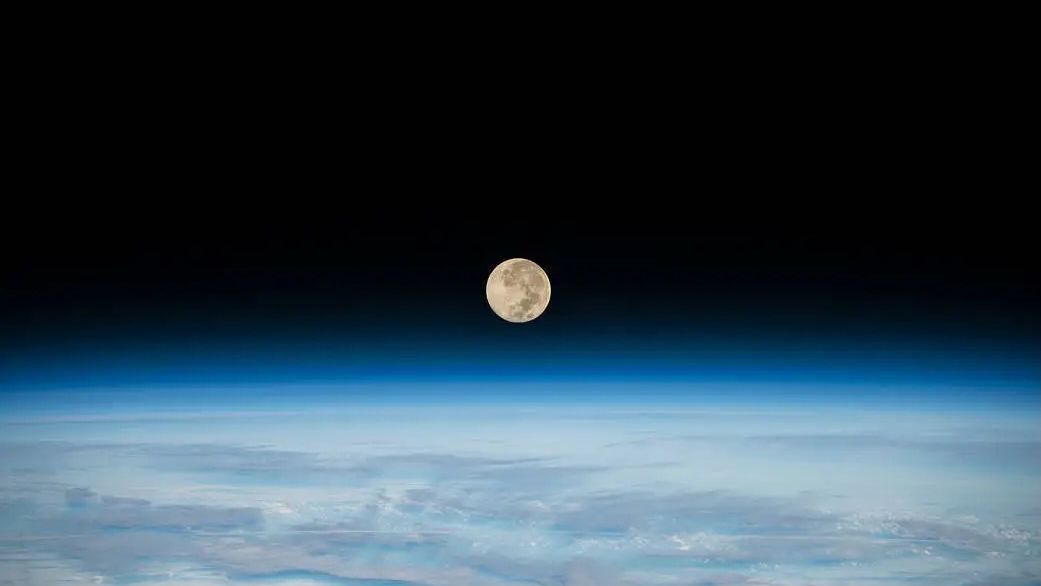Understanding the Pink Full Moon and Easter's Date in 2025

The full moon, a celestial wonder visible from the International Space Station, showcased its brilliance on December 8, 2022. In many cultures, the timing of this lunar phenomenon plays a significant role in determining important holidays. For example, Easter is celebrated on the Sunday following the first full moon that occurs after the spring equinox, which this year will occur on April 12.
Known traditionally as the "Pink Full Moon," this event derives its name from the blooming of Phlox subulata, also known as creeping or moss pink. This flowering plant is native to the eastern and central regions of North America and is typically in full bloom during this time of year. However, its worth noting that the full moon does not actually take on a pink hue, a misconception that can lead to disappointment. Many have shared similar experiences; for instance, a childhood memory of a local weathercaster prompting viewers to gaze at the pink moon led to a disappointing realization that it looked just like any other full moon.
This year, the April full moon also carries the title of the Paschal Moon, marking its significance in both the Jewish and Christian calendars. The Paschal Moon is integral to determining the start of the Hebrew celebration of Passover, as well as the date of Easter. The first day of the month of Nisan in the Hebrew calendar is signified by the new moon closest to the vernal equinox, followed by the Paschal Moon which typically lands on the 14th or 15th of Nisan, aligning it with the observance of Passover.
According to Christian tradition, Easter Sunday follows the first full moon that occurs after the vernal equinox, which this year will be on Saturday, April 12, at 8:22 p.m. EDT. However, this year is unique as it will not lead to Easter Sunday being celebrated on April 13, but rather on April 20, eight days later. This surprising discrepancy arises from a combination of factors that can often baffle those trying to pinpoint the date of Easter.
One key reason for this variation involves the ecclesiastical rules that govern the calculation of Easter's date. The vernal equinox is fixed to March 21 for ecclesiastical purposes, even though it can occur on March 20 in some years. This set date leads to peculiarities in how Easter is observed. In 2038, for example, the vernal equinox will fall on March 20, making the following day a full moon, yet Easter will be celebrated on April 25, as dictated by ecclesiastical rules rather than astronomical reality.
Another interesting factor to consider is that the Paschal Full Moon is not determined by astronomical data; instead, it is derived from ecclesiastical tables. These tables utilize complex calculations based on concepts such as epacts and the Golden Number, which means the dates provided by these tables do not always align with the actual lunar phases. Notable astronomer Jean Meeus highlighted this discrepancy in his work, noting that there are numerous instances where Easter is celebrated based solely on ecclesiastical rules rather than the actual position of the moon.
Meeus also points out a few fascinating facts about the Easter dating system. For instance, the earliest possible date for Easter is March 22, which last occurred in 1818 and will next occur in 2285. Conversely, the latest date is April 25, as mentioned earlier. Furthermore, if Easter falls in March, it is always flanked by an Easter celebration in April the year before and after. The last time an isolated Easter in April occurred was in 1990, with the next occurrence not set to happen until 2085.
Turning our attention back to 2025, the reason for this year's delayed Easter is particularly intriguing. In North America, the Paschal Full Moon occurs on the evening of April 12; however, in Europe, it takes place after midnight on April 13. This time difference results in Easter being celebrated a week later in Europe, including in the Vatican, which has historical precedence in determining the date of Easter. Thus, while North Americans may anticipate Easter on April 13, it will actually be celebrated on April 20, marking the latest Easter since 2019 and the latest until 2030, which will also fall on April 21.




























